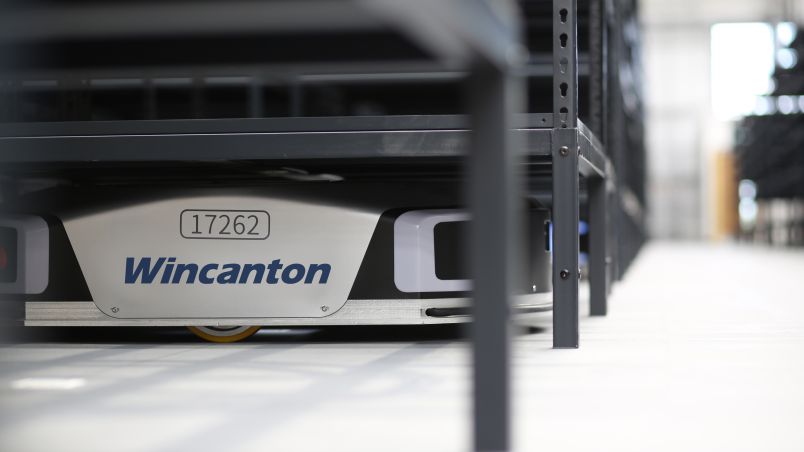
This sudden shift in demand presented challenges and opportunities for retailers in this space, which had to quickly adapt processes and networks to meet expectations.
We spoke to our Managing Director for General Merchandise, Rachel Gilbey, to find out more about the lessons of the last nine months, and what we can expect in 2021 and beyond.
General merchandise
As we enter 2021, what can General Merchandise retailers expect? And how can they adapt based on the learnings of 2020?
As eating out, shopping and travel were all heavily restricted through early stages of the COVID-19 pandemic, we experienced an almost overnight switch in consumer spending. The result was a significant increase in eCommerce activity, with home and DIY products and exercise goods growing in popularity, which has continued as the situation has evolved. Supply chains responded at record speed to maintain stock availability, flexing with the shift in demand to facilitate solutions such as click and collect.
The million-dollar question is: ‘what will people spend on in 2021?’. It’s more difficult than ever to confidently predict this, so supply chains will need to continue to build on this new foundation of flexibility and agility to continue to respond at pace.
Creating flexible capacity, at the lowest cost to serve, while maintaining market-leading customer propositions will be a key focus area for the year ahead.
Wincanton’s great people have been central to the business’ ability to adapt to COVID-19. Our colleagues have gone above and beyond to meet our customers’ needs throughout a challenging time. Our number one priority remains keeping our colleagues safe as the pandemic continues. Alongside this, we remain committed to attracting, retaining, and developing the very best talent in our industry to continue to build supply chains that provide the solutions modern retailers and manufacturers need.
What does convenience mean for the consumer of 2021?
Whilst pure-play online retailers like Amazon may have created a view that convenience means ‘delivering to home, as fast as possible’ with offerings such as Amazon Prime, the real meaning of convenience depends on the product being purchased and the individual's needs.
For a family undertaking a large home improvement project, such as a new kitchen or bathroom, convenience may mean certainty. Having the kitchen or bathroom delivered on-time and in full for when you have fitters or specialists scheduled in is one of the most important factors when choosing a delivery option.
The more environmentally conscious Millennial generation is shifting from convenience to consciously selecting the greenest delivery option, even if this is slower. Some companies are now offering greener delivery routes in return for lower delivery charges, or initiatives like tree planting to offset carbon emissions.
However, for distress purchases, convenience may still be to go as fast as possible; but to have a choice on collection points, including click and collect.
The shift in what convenience really means will again drive a need for flexibility across supply chains. Retailers will be looking to provide customers with choice, while supporting the growing trend to allow consumers to make sustainably-minded decisions.
How can the high street adapt to keep its place in an eCommerce future?
There’s the potential for shops to evolve into experience-led spaces with meeting places and social environments that contain cafés and restaurants (such as Next with in-store Costa Coffee outlets and the famous Selfridges restaurant areas). Retailers will be looking for better ways to drive footfall and one way to do that is by creating unique experiences.
Shopping as an experience could be the best route for the high street. eCommerce cannot always replicate the benefits of visiting physical stores and interacting with products; especially larger items, such as kitchens. Showroom areas where consumers can touch and feel the products will remain a critical part of the high street.
We’re also seeing store space collaboration, with different businesses under one roof. This allows consumers to mix and match different purchases in one journey and brings the opportunity for retailers to generate mutually beneficial footfall. B&Q launched its first Asda concession stores in 2020 and I think we will see more of this to come.
Also, retailers with substantial asset footprints (high street stores, out of town stores and trade counters) are in a unique position to leverage their scale. Opportunities for drive-through click and collect hubs (where space is available) exist for some retailers, while repurposing smaller property assets to function as returns and micro-fulfilment hubs makes sense in urban environments. The latter approach will not only help to improve supply chain efficiency, but could have knock-on positive effects for additional in-store activity and for small local businesses in the same areas.
What are the big lessons your sector has learnt from 2020?
I have to start by saying that I am truly humbled to be part of a team that has helped to keep the country moving throughout the unprecedented year we’ve all been through. Our focus on keeping each other safe and doing our very best for each other, and our customers, has made me extremely proud to be part of Wincanton. Our focus on our people as our most important asset will remain a central part of everything we do.
We have all adapted, making decisions at pace, taking calculated risks and learning fast by making a few mistakes along the way. I hope that we can continue to embrace this pace as we settle into the new normal, both in 2021 as the vaccine rolls out and beyond.
Our strategic relationships and insight into our customers’ businesses allowed us to learn and change together. By truly understanding the strategy for the retail side of the business, we have been able to predict how the physical supply chain should develop to support what has been a quickly shifting environment.
Collaboration is playing an increasing role as volumes change. Sharing our three key assets – people, property and transport – will remain fundamental to creating the flexible solutions we need at the right cost to serve for the future.




